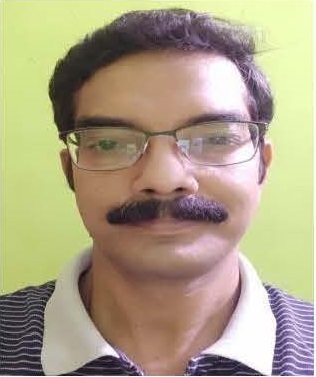2025-05-01 Engineered Two Dimensional electrocatalysts for Sustainable Clean Energy Harvesting

時間:2025-05-01(四) 11:10~12:00
講題:Engineered Two Dimensional electrocatalysts for Sustainable Clean Energy Harvesting
講者:Professor Kuntal Chatterjee
服務單位:Department of Physics, Vidyasagar University, India
地點:4F創意講堂
主持人:張鑑祥 教授
摘要 :
Keywords: Engineered 2D materials, Electrocatalyst, HER-OER, UOR, ORR
The world urgently needs alternative energy solutions for a sustainable future. Electrocatalysis for energy generation from water could be a game changer, but developing the right materials and methods remains a challenge. Material scientists are tasked with engineering electrocatalysts by controlling defects, porosity, heterostructures, and dopants.Tuning non-precious catalysts for efficient water splitting is difficult, yet it holds promise for the hydrogen economy. We present a highly active, durable, and earth-abundant NiCoP electrocatalyst with excellent performance in both oxygen and hydrogen evolution reactions. By varying the Ni-Co composition through a simple two-step method, we obtained coral-like NiCoP, with Ni0.25Co0.75P showing superior OER activity and Ni0.75Co0.25P excelling in HER under acidic conditions1. We also introduce engineered 2D nanosheets of MoS2 and TaS2 to showcase the excellent oxygen evolution reaction in harsh acidic medium¬.2To address the growing demand for clean energy and reduce hazardous urea waste, electrochemical urea oxidation (UOR) has emerged as a promising alternative. However, slow reaction kinetics limit its efficiency. We propose the engineering of electrocatalysts that combine UOR activators and accelerators to improve performance. We synthesized a nitrogen-doped carbon-coated Ni-MOF, incorporating MoO2 and rGO to create a MoO2/Ni-MOF/rGO heterostructure, enhancing the material's electrochemical properties3. Additionally, the search for electrocatalysts for oxygen reduction reactions (ORR) is crucial for improving metal-air batteries and fuel cells. We report a 3D composite structure combining 1D carbon nanotubes (CNTs) and 2D MoS2 nanosheets, which demonstrates excellent ORR activity in alkaline conditions, opening new avenues for designing high-performance electrocatalysts for energy conversion devices4.Last but not the least, the novel approach to downscale the 2D materials towards nanodots will be discussed. The unique approach not only brings the dimensional change but it also incorporates polymorphic change in the materials making the materials potential for many applications.
(1) Gan, P. K.; Pal, A.; Rizvi, S.; Kumari, N.; Kar, M.; Chatterjee, K. Tuneable and coral-like NiCoP for enhanced oxygen and hydrogen evolution reaction. Materials Today Communications 2024, 38, 108063.
(2) Wu, J.; Liu, M.; Chatterjee, K.; Hackenberg, K. P.; Shen, J.; Zou, X.; Yan, Y.; Gu, J.; Yang, Y.; Lou, J. Exfoliated 2D transition metal disulfides for enhanced electrocatalysis of oxygen evolution reaction in acidic medium. Advanced Materials Interfaces 2016, 3 (9), 1500669.
(3) Acharya, A.; Mandal, K.; Kumari, N.; Chatterjee, K. Synergistic Inclusion of Reaction Activator and Reaction Accelerator to Ni‐MOF Toward Extra‐Ordinary Performance of Urea Oxidation Reaction. Small 2024, 2407377.
(4) Lee, C.; Ozden, S.; Tewari, C. S.; Park, O. K.; Vajtai, R.; Chatterjee, K.; Ajayan, P. M. MoS2–carbon nanotube porous 3 D network for enhanced oxygen reduction reaction. ChemSusChem 2018, 11 (17), 2960-2966.
學經歷 :
Dr. Kuntal Chatterjee is currently a Professor in the Department of Physics, Vidyasagar University, Midnapore, India. Dr. Chatterjee completed his Ph.D. degree in Materials Science in 2005 from IACS, Jadavpur University, India and did his Post-Doctoral research from Institute of Physics, Academia Sinica, Taiwan. After that he joined Vidyasagar University in 2007. Prof. Chatterjee was awarded the prestigious RAMAN research fellow from India Government to carry on research as a visiting scholar at RICE university from 2014 to 2015. His main research interests are Nanocomposites for environmental applications Low dimensional Materials for energy applications Surface Science and Atomic Engineering. Prof. Chatterjee has carried out several research projects from national funding and has a strong national and international collaboration. He has more than 55 publications in international journals on his name. Five students have already awarded Ph.D. degree from his lab and currently five research scholars are working under his supervision.
